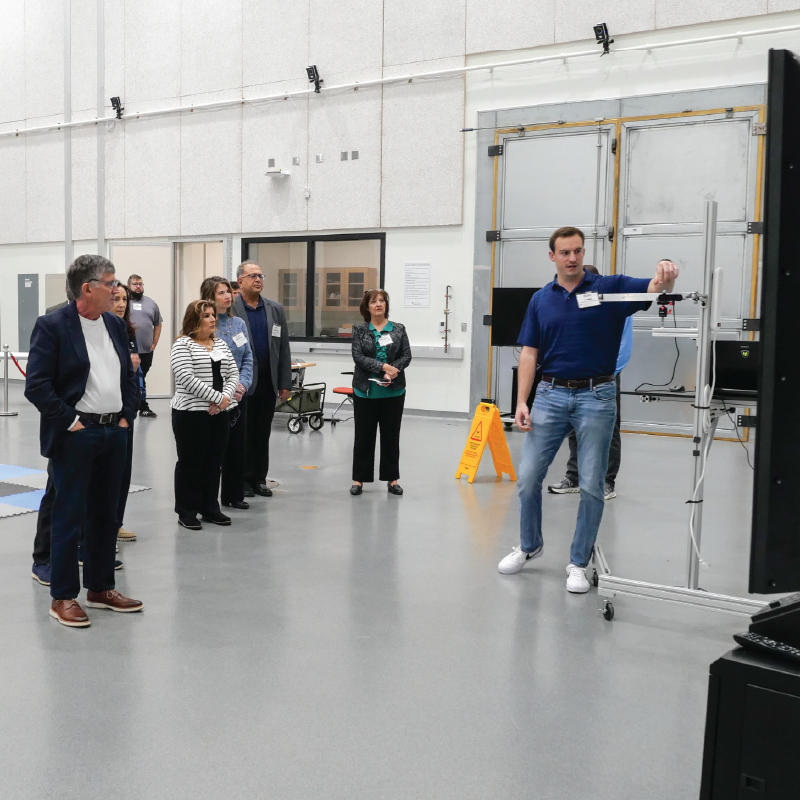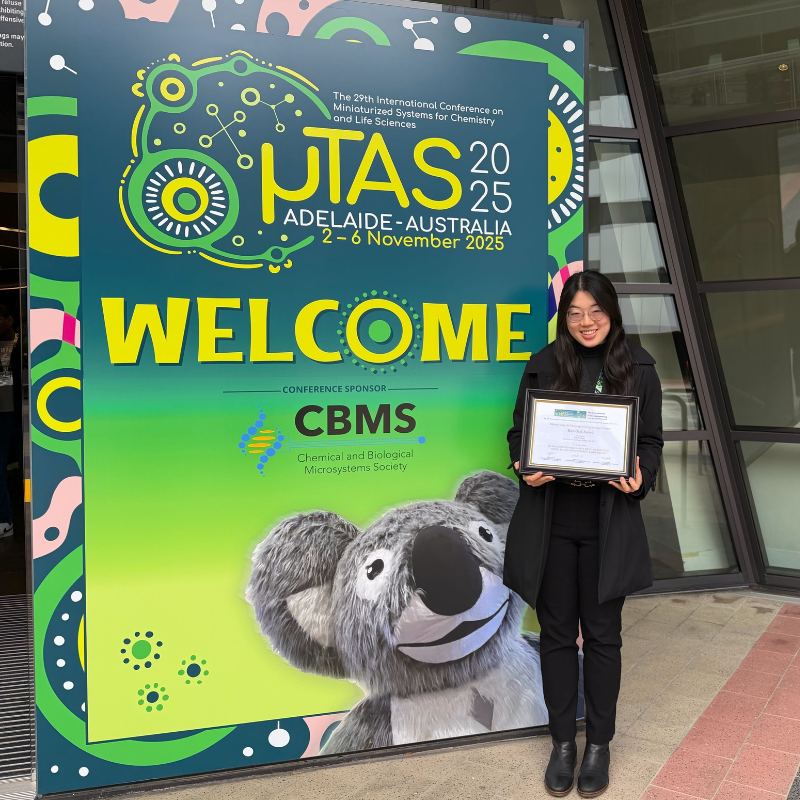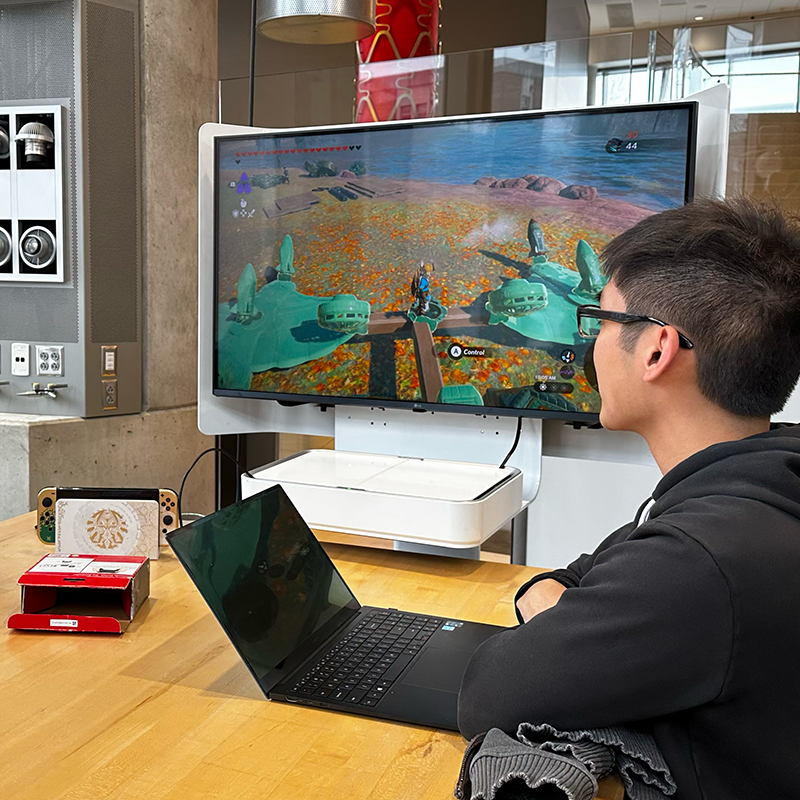News Story
Herrmann Receives 'Innovator of the Year' Award
Associate Professor Jeffrey Herrmann (ME/ISR) is one of 24 winners statewide of the Maryland Daily Record's Innovator of the Year awards.
Herrmann won the award for his Clinic Planning Model Generator (CPMG), an emergency preparedness planner used in state and county public health departments across the United States. He was nominated for the award by ISR.
About the innovation
The Clinic Planning Model Generator (CPMG) is a spreadsheet application that generates customized analytical models of mass dispensing and vaccination clinics (also known as points of dispensing, or PODs). The CPMG software creates accurate models for planning mass dispensing or vaccination campaigns using PODs.
Emergency preparedness planners can use the models to answer the following questions: (1) Given a resident flow rate (calculated from population size and duration of campaign), how many people do we need to staff each station? (2) How much does each workstation need to accommodate residents waiting in line? (3) How long will residents spend inside the POD? (4) How will the PODs operations be affected if stations are eliminated or combined?
The software automatically generates a spreadsheet from a minimal set of user inputs. The software provides useful data that includes processing-time distributions for different types of workstations, but allows the user to makes modifications as necessary. Planners can easily adjust staffing levels and various inputs until they are satisfied with the efficiency of the clinics. Users can accept default values if they have little information about their clinics, or input more detailed information, such as routing probabilities and process times.
In addition to its use for emergency preparedness planning, the software can be used to plan annual flu shot clinics and other similar medical applications. The spreadsheet software approach has many benefits.
The CPMG software is available free of charge on Dr. Herrmann's website for public health emergency preparedness planners to download. There also is no charge to receive assistance on its use. Planners do not have to create spreadsheets from scratch or understand the mathematics of queueing networks; yet, they generate a spreadsheet capacity planning and queueing network model that reflects the design they want to use. The POD planning models are portable and self-contained and require only Microsoft Excel. Because most public health emergency preparedness planners already use Excel, they do not have to buy new software. Moreover, the spreadsheet concept is so familiar that users can learn the software quickly.
Dr. Herrmann conducted the initial time studies and created computer simulation models of PODs in the summer of 2004. The first version of the spreadsheet software was made available via the project web site in late 2005. New versions of CPMG were published in 2006, May 2007 and February 2008. Specifically, the May 2007 release was a significant upgrade, to Version 2.03. This Version provided a new user interface, provided new mathematical formulas to improve model accuracy, and extended the capability and functionality of the spreadsheet software by adding a feature to allow the modeling of a self-service station (i.e. a POD which allows for residents to fill out required forms by themselves).
Prior to disseminating the software, Herrmann met with many public health emergency preparedness planners to describe the software and help them to start using it. In February 2006, 32 planners participated in training sessions at a NACCHO conference. These participants had the opportunity to use the software on laptop computers that we set up in the meeting room; our team helped them build models. We also ran separate workshops for planners from two counties in Maryland and one in Minnesota.
Herrmann's work is part of an exciting and innovative process of using operations research and applied mathematics to improve planning for bioterrorism attacks, pandemic flu, or other events. Poorly conceived plans can cause confusion, delay responses to events, and reduce the effectiveness of responses, all of which increase the number of victims.
When public health officials in Montgomery County, Maryland, requested mathematical models to help county health departments across the United States create plans for dispensing medications and vaccines during emergencies, Herrmann's team developed capacity planning and queueing network models. They then faced the challenge of distributing these models to people with minimal experience with these mathematical techniques and no resources for acquiring and learning new software.
To eliminate the most significant obstacles, they decided to use spreadsheets. Developing spreadsheets for this type of application differs significantly from end-user modeling and typical spreadsheet applications. This is one unique aspect of the innovation.
The biggest challenge to their spreadsheet modeling approach has been finding a good compromise between flexibility and structure. They need flexibility because planners want to evaluate a wide variety of designs. They need structure to make programming feasible and to reduce the user learning time.
Other computer models for planning PODs focus strictly on the staffing requirements of a POD. For example, how many nurses are needed to give vaccinations? The POD planning models created by the CPMG include not only staffing but also predictions of congestion at each station within the POD. For example, how long will residents have to wait for their shot? How many people will be in the POD? This additional information is extremely important for planning the physical layout of the POD and identifying security needs.
One of Herrmann's key reasons for creating a new modeling tool was that existing queueing network analyzers use language that is unfamiliar to public health professionals. Therefore, the team defined queueing terms in language that they could understand; the software also uses the correct emergency preparedness terms.
About the Innovator of the Year awards
The Innovator of the Year awards program recognizes Maryland residents and companies who have introduced innovations that have had a positive effect on their business, industry or community.
Nominees can be individuals or companies from any sector. The innovation can be a product, a service, a program or a process. The only requirements are that the nominee live or work in Maryland and that the innovation was introduced in the 12 months previous to the deadline.
Published August 22, 2008









